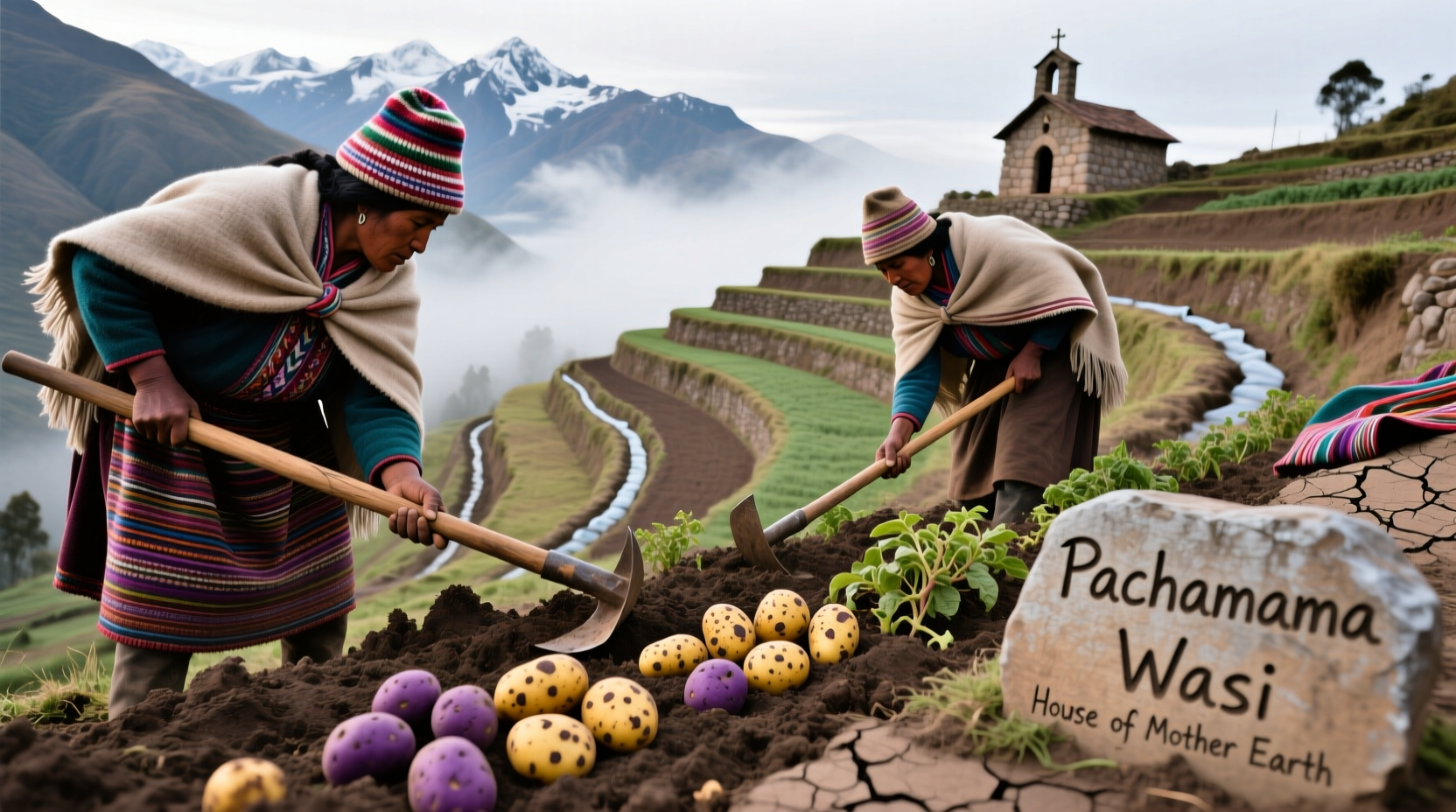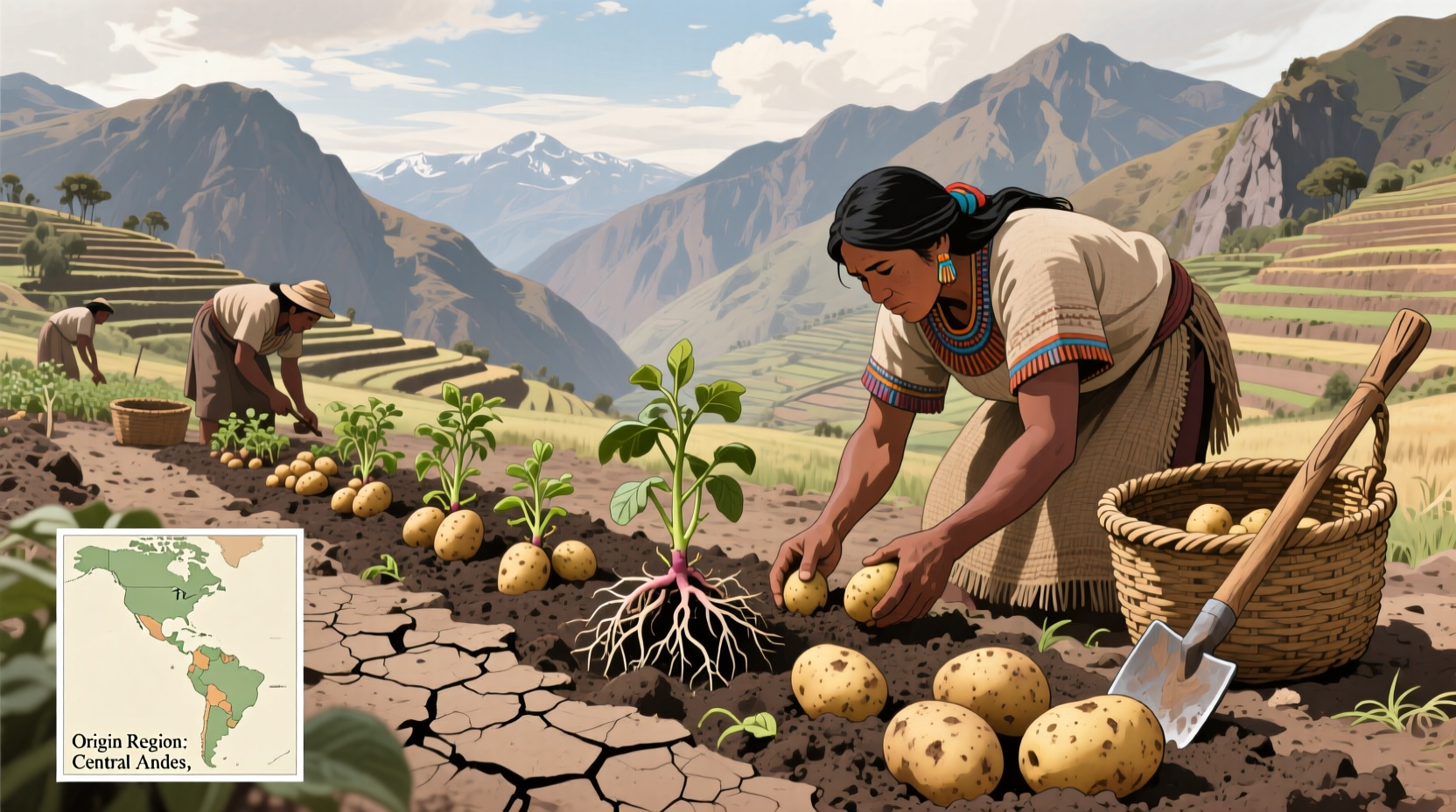For centuries, the humble potato has fueled civilizations, survived famines, and become a dietary staple worldwide. But where did this versatile tuber actually begin its journey? The scientific consensus points to one specific region that shaped potato history forever.
The Andean Birthplace of Potatoes
Archaeological evidence confirms that wild potato species (Solanum brevicaule complex) evolved in the high-altitude regions surrounding Lake Titicaca. Ancient communities in what's now Peru and Bolivia began selectively cultivating these wild tubers between 7,000 and 10,000 years ago. This domestication process transformed small, bitter wild potatoes into the diverse, edible varieties we recognize today.
Researchers from the International Potato Center (CIP) in Lima have identified over 4,000 native potato varieties still grown in the Andes, demonstrating the region's extraordinary genetic diversity. This biodiversity hotspot represents the living legacy of millennia of indigenous agricultural knowledge.
| Historical Period | Key Developments | Scientific Evidence |
|---|---|---|
| 8000-5000 BCE | Initial domestication in Andean highlands | Starch residue analysis on ancient pottery |
| 1530s CE | Spanish conquistadors encounter potatoes | Historical records from Pedro Cieza de León |
| 1570-1590s | Introduction to Europe via Spanish trade routes | Botanical illustrations in European herbals |
| 1700s | Global spread through colonial trade networks | Ship manifests and agricultural records |
How Potatoes Traveled From Andes to World
The Spanish conquest of the Inca Empire in the 16th century marked the beginning of potatoes' global journey. Spanish explorers first documented potatoes in 1537, with historian Pedro Cieza de León writing about them in 1553. Initially met with suspicion in Europe, potatoes gradually gained acceptance as famine-resistant crops.
By the late 16th century, potatoes reached Spain and quickly spread to Italy, Germany, and the British Isles. Ireland's adoption of potatoes in the late 1500s created the conditions for the devastating 1840s famine when the Phytophthora infestans blight struck. This tragedy ironically demonstrated potatoes' importance to European food security.

Debunking Common Potato Origin Myths
Despite scientific consensus, several misconceptions persist about potato origins:
- Myth: Potatoes originated in Ireland
Reality: Ireland adopted potatoes centuries after Andean domestication - Myth: All potatoes come from one original variety
Reality: Multiple domestication events created distinct potato lineages - Myth: Potatoes were unknown outside South America before Columbus
Reality: Pre-Columbian trade networks may have spread potatoes to Central America
Modern Significance of Potato Origins
Understanding potato origins isn't just academic—it has practical implications today. The genetic diversity preserved in Andean native varieties provides crucial resistance traits against modern threats like climate change and emerging diseases. Scientists at the International Potato Center (CIP) actively collect and preserve these varieties to safeguard global food security.
When you bite into a potato today, you're experiencing a food that sustained ancient Andean civilizations through harsh mountain conditions. This remarkable adaptability—from 13,000-foot elevations to global cultivation—explains why potatoes now rank as the world's fourth-largest food crop after maize, wheat, and rice.
Why This History Matters for Modern Agriculture
The story of potato domestication offers valuable lessons for contemporary food systems. Indigenous Andean farmers developed sophisticated agricultural techniques like waru waru (raised field systems) that prevented frost damage and optimized water usage—methods now being revived for climate-resilient farming.
As researchers face new challenges like late blight resistance and climate adaptation, the genetic treasure trove preserved in native Andean varieties becomes increasingly valuable. Modern breeding programs frequently return to these original gene pools to develop improved cultivars.











 浙公网安备
33010002000092号
浙公网安备
33010002000092号 浙B2-20120091-4
浙B2-20120091-4